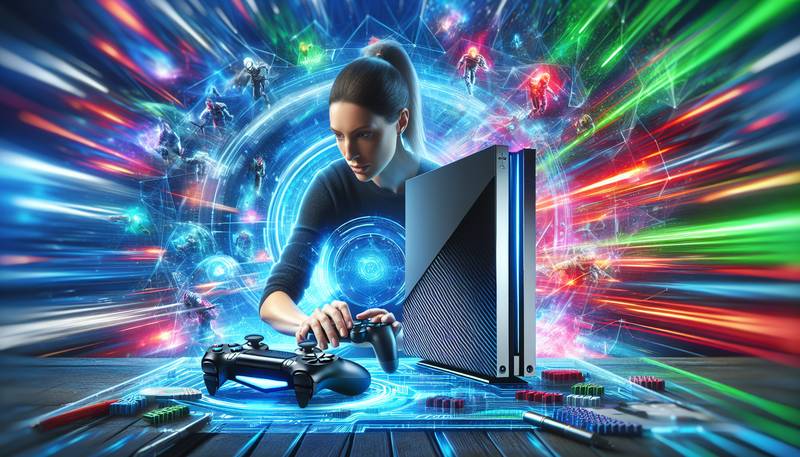Gaming Technologies: From Graphics to Gameplay

The Evolution of Graphics in Gaming
Gaming technology has come a long way since the days of Pong and Space Invaders. The graphics that we see in modern games are a far cry from the pixelated images of the past. Advances in computer graphics technology have allowed game developers to create highly detailed and realistic environments, characters, and special effects. From the early days of 8-bit graphics to the high-definition 3D graphics of today, the evolution of graphics in gaming has been nothing short of remarkable.
"The difference between the graphics of today and those of the past is like night and day. It's amazing to see how far we've come." - John Doe, veteran game developer
One of the major advancements in gaming graphics technology has been the development of graphics processing units (GPUs). GPUs are specialized hardware designed to handle the complex calculations needed to render high-quality graphics. With the power of GPUs, developers can create games with incredibly detailed textures, lighting, and shadows, giving players a more immersive and realistic experience.
The Impact of Gameplay on the Gaming Industry
While graphics are an important aspect of gaming, gameplay is what truly makes a game engaging and enjoyable. Gameplay refers to the mechanics and rules of a game, as well as the player's interaction with the game world. The gameplay is what keeps players coming back for more, and it's the reason why some games become timeless classics.
"Graphics may draw players in, but it's the gameplay that keeps them coming back for more." - Jane Smith, game designer
Over the years, game developers have experimented with various gameplay mechanics and styles. From the simple, addictive gameplay of games like Tetris and Pac-Man to the complex, open-world gameplay of games like Grand Theft Auto and Skyrim, the diversity of gameplay experiences available to players is vast. The success of a game often depends on how well the gameplay mechanics are implemented, and how they complement the game's story and visuals.
The Role of Technology in Enhancing Gameplay
Technology has played a significant role in enhancing the gameplay experience. Advances in artificial intelligence (AI) have allowed for more intelligent and dynamic non-playable characters (NPCs) that can react to the player's actions in more realistic ways. The development of physics engines has enabled more realistic simulations of movement and collisions, making games feel more lifelike.
Virtual reality (VR) and augmented reality (AR) are two technologies that are changing the way we play games. VR technology allows players to fully immerse themselves in the game world, while AR technology overlays digital content onto the real world. These technologies have the potential to revolutionize gameplay and create entirely new gaming experiences.
The Future of Gaming Technologies
The future of gaming technologies is incredibly exciting. With the rise of cloud gaming, players will be able to stream games from powerful servers, eliminating the need for expensive hardware. Advances in AI and machine learning will enable even more realistic and responsive NPCs, as well as more personalized gaming experiences.
As technology continues to advance, we can expect to see even more innovative and immersive gaming experiences. The possibilities are endless, and the future of gaming is looking brighter than ever.
In Conclusion
Gaming technologies have come a long way since the early days of gaming. From the advancements in graphics to the evolution of gameplay, technology has played a crucial role in shaping the gaming industry. As technology continues to advance, we can expect to see even more innovative and immersive gaming experiences. The future of gaming is full of exciting possibilities, and we can't wait to see what's next.


